Tropical Christmas cactus is an easy-care houseplant with blossoms in shades of pink, red, white, and yellow that open during the fall to winter holiday season.
The name is a catch-all term that includes a number of Schlumbergera species and hybrids, including S. russelliana, S. bridgesii, and Schlumbergera x buckleyi, as well as S. truncata, the Thanksgiving cactus, which blooms approximately one month before the Christmas variety.
These plants are South American epiphytes that cling to rainforest trees or rocks, drawing sustenance from rainfall and the nutrients in their immediate environment.
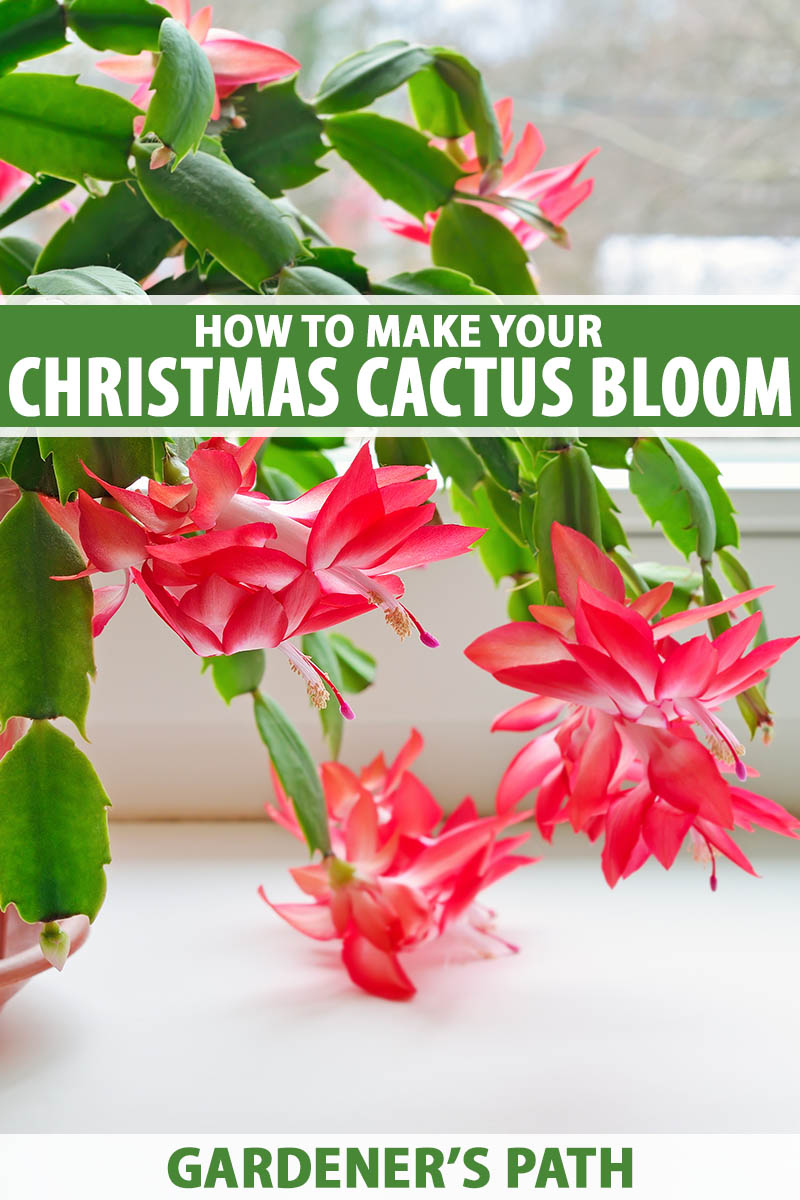
We link to vendors to help you find relevant products. If you buy from one of our links, we may earn a commission.
Instead of true leaves, this plant has flattened segments called phylloclades, or cladodes, that are fleshy and, unlike many cacti, have no thorns. On Christmas varieties, the margins are rounded. Thanksgiving types have serrated edges.
Blooms appear at the end of the stems, on the last segment.
In our guide to growing Christmas cactus, we discuss cultivation indoors in bright indirect light and organically-rich, well-draining potting medium.
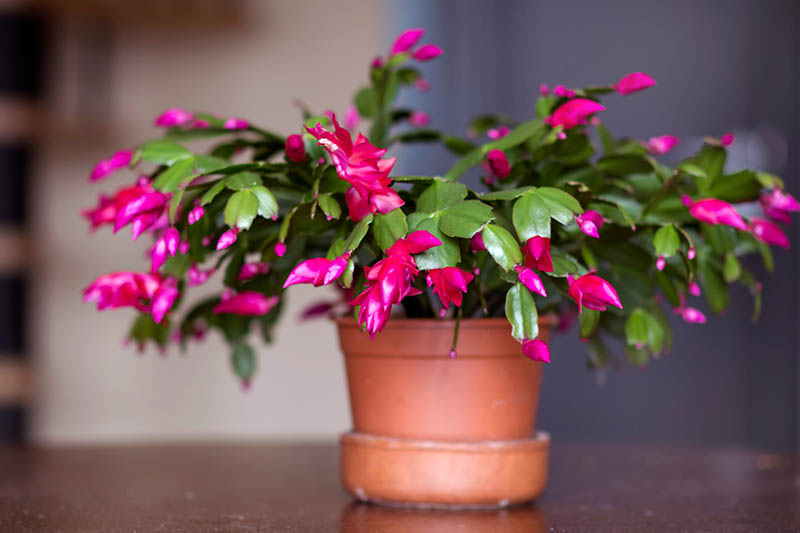
This article will cover how to coax plants to produce an abundance of flowers in time for the holidays.
Here’s the line-up:
What You’ll Learn
Let’s get started!
Dormancy Is the Key
For plants to set buds, they must experience a period of winter dormancy like they would in their native tropical rainforests.
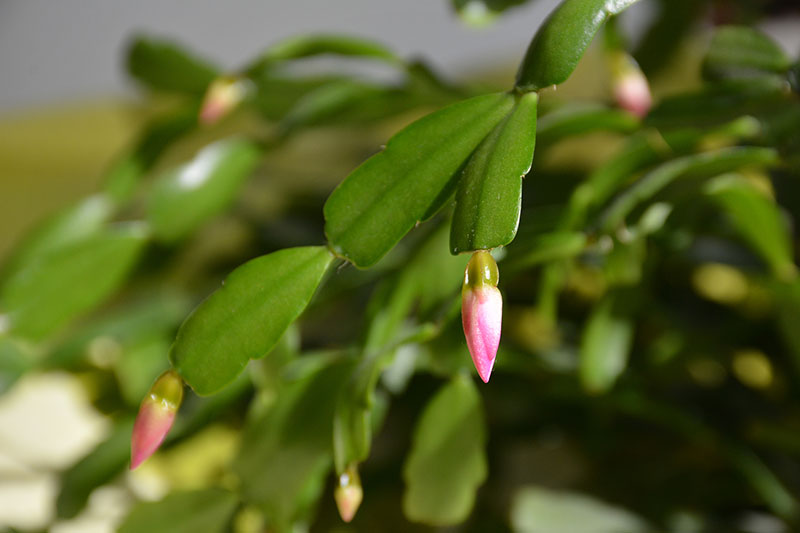
Known as “short day” plants, it’s the period of shorter days and cooler weather that halts foliar growth and jump starts the flowering process.
How can we replicate the appropriate conditions at home?
To trigger the natural inclination to bloom, four factors must be manipulated: nourishment, moisture, light, and temperature.
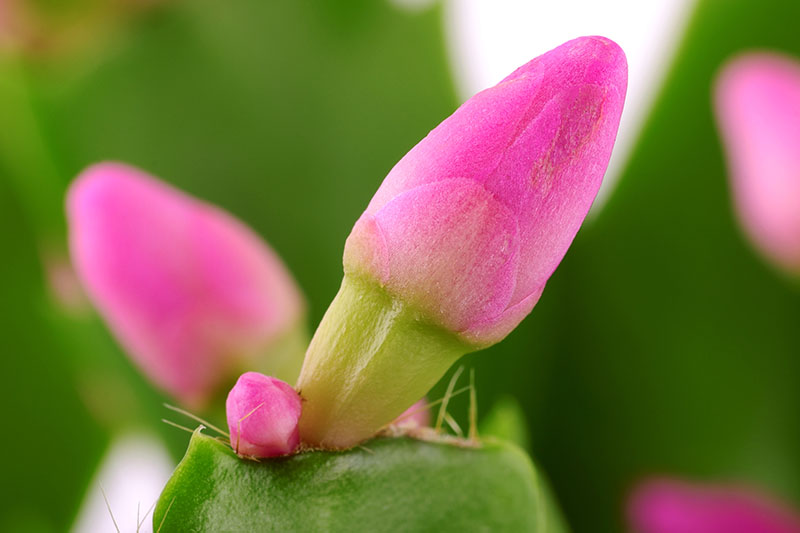
By making adjustments to these four aspects of plant care, we can stimulate dormancy.
You’ll need to start preparing your plant for flowering six to eight weeks before Christmas.
Here’s how to do it:
Suspend Nutrition
If you have been fertilizing your plant during the growing season, stop any fertilizer applications.
Withholding additional nutrition is the first step in the gradual shift from foliar to reproductive growth, or flowering.
Limit Moisture
Instead of a thorough soaking every few weeks, during the resting period, water only when the top inch of the potting medium feels dry to the touch, and then only enough to moisten it.
Do not allow the soil to dry out completely.
Need more assistance? Check out our guide on choosing the best potting medium for Christmas cacti.
Withhold Light
To mimic the shorter days of winter, you’ll need to keep the plant in total darkness for 14 to 16 hours each night.
During the day, the plant should be exposed to bright indirect light, but at nighttime it requires total darkness – even exposure to artificial light can stop it from flowering.
You can place your plant in a seldom used room with the shade pulled down, or place a bag or inverted box over the entire plant at night. Alternatively, you can move your plant in and out of a closet every day, but this could cause some unnecessary stress, as Christmas cacti don’t like to be moved.
Decrease the Temperature
And finally, the plant requires a cool location where the temperature is between 50 and 55°F. A chilly coat closet for nighttime and a north-facing window sill during the day work just fine.
Consistently cool temperatures, the appropriate amount of darkness, minimal water, and no supplemental nutrition trigger dormancy, the key ingredient in the flowering formula.
Start a Holiday Tradition
When buds appear, it’s time to return the plant to its usual placement in a temperate room with indirect sunlight, so they can unfurl to reveal their exquisite blossoms.
For a second bloom in spring, you can induce dormancy using the same process six weeks before Easter. However, there are likely to be fewer flowers.
If you do want reliable flowering at Easter, an alternative is a different species of Schlumbergera. S. gaertneri, formerly Hatiora gaertneri, is the Easter cactus.
It has star-shaped blossoms and slightly scalloped margins. The same dormancy process applies, and should be started about six weeks before Easter for spring flowers.
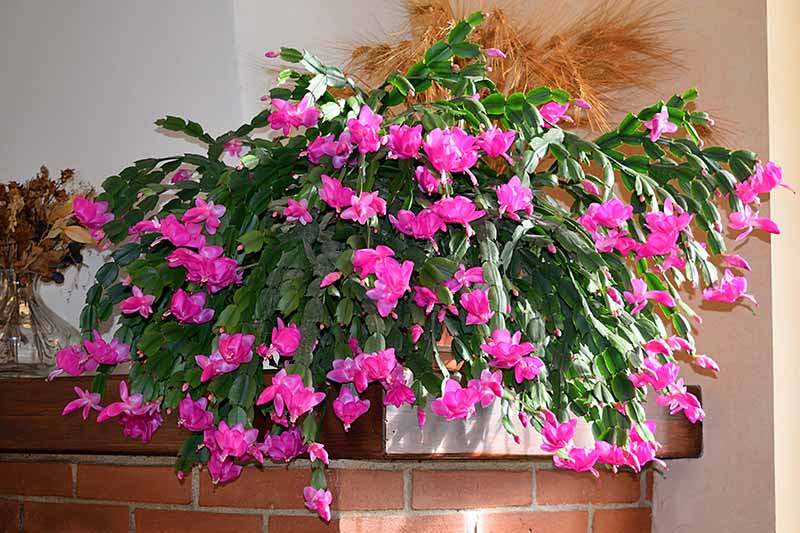
Include Schlumbergera cacti in your holiday decor. They’re easy to grow, live long enough to become family heirlooms, and are easy to propagate via cuttings. And when the buds burst into tropical blossoms, they never cease to delight.
Does your Christmas cactus bloom every year? Do you have any tips for helping it along? Let us know in the comments section below!
For more information about Christmas cactus, you’ll want to read these articles next:
- Why Do I See Hair-Like Roots on My Christmas Cactus?
- Why Is My Christmas Cactus Dropping Leaves?
- How to Identify and Control 7 Common Christmas Cactus Pests
- Why Is My Christmas Cactus Turning Purple?
© Ask the Experts, LLC. ALL RIGHTS RESERVED. See our TOS for more details. Uncredited photos: Shutterstock.
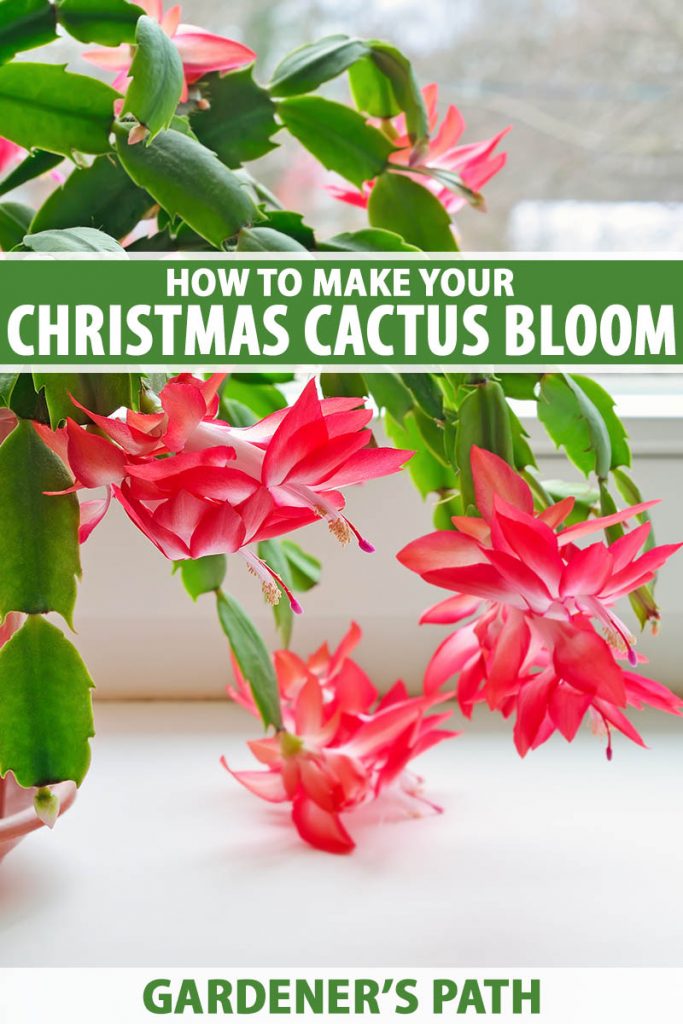
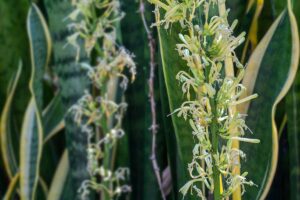


I grow them because I think they are an awesome beautiful plant and because my grew them forever.
Hi Marilee –
Thank you for joining us on Gardener’s Path. We’re glad to hear you share our love of Christmas cacti.
Love this group. Have a red and white Thanksgiving catus.
Hi Bonnie –
We’re so glad you are enjoying Gardener’s Path and Christmas cactus cultivation.
I am new to this group. My cactus has only bloomed 3 times since I’ve had it.
What am I doing wrong?
My north window area is a hot back porch.
Please help
Hi Sonya –
Welcome to Gardener’s Path.
I think the problem may be the hot porch.
You may be able to get your Christmas cactus to bloom again by inducing winter dormancy.
Here’s how:
Six to eight weeks before Christmas, stop fertilizing and reduce watering. Moisten the soil occasionally to keep it from completely drying out.
Place the cactus in a room with a temperature between 50 and 55°F.
Provide 14 to 16 hours of darkness each night and north-facing sunlight during the day.
When buds appear, return your plant to its original location.
My Christmas Cactus is oer 80 years long and does not bloom You can tell it looks old and am wondering if i can save it. I have propagated several.
Hi Lona – Wow! Longevity is a wonderful aspect of growing a Christmas cactus, but it can take a toll in terms of woody stems and reduced blooming. Propagating cuttings, as you’ve done, is a great way to take a treasured old plant into the future. You can try to rejuvenate your old cactus. Prune up to one-third of the total volume to encourage fresh growth on the woody stems. If you find stems that have split, prune them off completely, as wounded plant tissue is vulnerable to disease and rotting. Wait a few weeks for the stress of pruning… Read more »
The first Christmas cactus I had was in Northern California, it bloomed profusely 3-4 times per year. I now live in New Mexico @ 7000 feet. I bought a Christmas cactus last Christmas and it’s got blooms coming on quick.
Hi Jill –
Your cactus is healthy and budding nicely. Thank you for sharing!